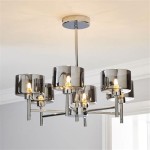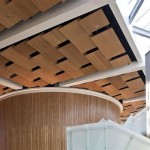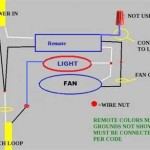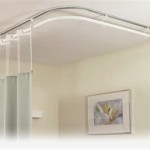Why Do Houses Have Drop Ceilings?
Drop ceilings, also known as suspended ceilings, are a common feature in many homes, particularly in basements, kitchens, and bathrooms. They consist of a lightweight grid system suspended from the main ceiling, which supports tiles or panels. While they might seem purely aesthetic, several practical reasons explain their widespread use.
Concealing Unsightly Elements
One of the primary purposes of drop ceilings is to conceal unsightly elements. Pipes, ductwork, wiring, and uneven joists can detract from a room's appearance. A drop ceiling provides a clean, finished look by hiding these components above the suspended grid. This is especially beneficial in basements, where exposed infrastructure is common.
Improved Acoustics
Drop ceilings can significantly improve a room's acoustics. Certain ceiling tiles are designed with sound-absorbing properties, which help minimize noise and echo. These tiles are particularly useful in home theaters, music rooms, or any space where sound control is important. They dampen sound reflections, creating a more comfortable and pleasant auditory environment.
Enhanced Energy Efficiency
Drop ceilings contribute to improved energy efficiency by creating a "dead air" space between the suspended ceiling and the structural ceiling above. This trapped air acts as insulation, reducing heat transfer and minimizing energy loss. This can lead to lower heating and cooling costs, especially in rooms with high ceilings.
Easy Access to Utilities
Access to plumbing, wiring, and other utilities is simplified with drop ceilings. Individual ceiling tiles can be easily removed and replaced, providing convenient access for repairs, maintenance, or upgrades. This eliminates the need to cut into drywall or plaster, streamlining the process and minimizing disruption.
Fire Safety
Certain drop ceiling tiles are designed with fire-resistant materials. These tiles can slow the spread of fire and smoke, providing valuable time for occupants to escape in the event of a fire. Building codes often specify fire-rated ceiling materials in specific areas of a home, making drop ceilings a practical solution for meeting these requirements.
Cost-Effectiveness
Compared to other ceiling finishing options like drywall or plaster, drop ceilings are often a more cost-effective solution. The materials are relatively inexpensive, and installation is typically straightforward, reducing labor costs. This makes drop ceilings a budget-friendly option for finishing basements, utility rooms, or other areas where aesthetics are not a primary concern.
Design Flexibility
While often associated with a utilitarian aesthetic, drop ceilings offer surprising design flexibility. Tiles are available in various textures, colors, and patterns, allowing homeowners to customize the look and feel of a room. Some manufacturers offer decorative tiles that mimic the appearance of more expensive materials like tin or coffered ceilings, adding a touch of elegance without the high cost.
Moisture Resistance
In moisture-prone areas like bathrooms and kitchens, certain types of drop ceiling tiles offer resistance to moisture and humidity. These tiles are typically made from materials like vinyl or fiberglass, which are less susceptible to mold and mildew growth. This helps maintain the integrity and appearance of the ceiling in these challenging environments.
Easy Installation and Repair
Drop ceilings are relatively easy to install compared to other ceiling types. The grid system is lightweight and easy to assemble, and the tiles simply drop into place. This makes it a feasible DIY project for many homeowners. Similarly, repairs are also straightforward. Damaged or stained tiles can be easily replaced without affecting the surrounding tiles or the grid system itself, minimizing repair costs and time.
Light Integration
Recessed lighting fixtures can be easily integrated into drop ceiling systems. The grid system accommodates standard-sized light fixtures, simplifying the installation process and providing even illumination throughout the room. This is especially beneficial in basements or rooms with limited natural light, where strategic lighting is essential.
Height Adjustment
Drop ceilings offer flexibility in terms of ceiling height. The suspended grid system can be adjusted to accommodate different ceiling heights and create a more proportionate space. This is particularly helpful in rooms with very high ceilings, where lowering the ceiling can create a more intimate and comfortable atmosphere.

Benefits Of Having Suspended Ceilings In A Home

Dropped Suspended Grid Ceiling Design Ideas Advantages Disadvantages

Drop Ceiling Update Ceilings Armstrong Residential

Drop Ceiling Design Ideas Ceilings Armstrong Residential

Wood Drop Ceiling Ceilings Armstrong Residential

Basement Ceilings Drywall Or A Drop Ceiling Fine Homebuilding

How To Install A Drop Ceiling Yourself

10 Drop Ceiling Ideas To Dress Up Any Room Bob Vila

What Are Ceiling Tiles And Why Use Them Bayside Plasterboard

Installing Woodhaven Planks And Hiding Drop Ceiling Grid Sawdust Girl
Related Posts








